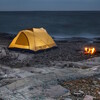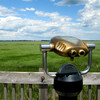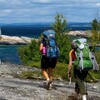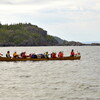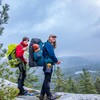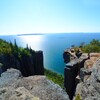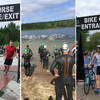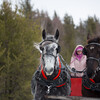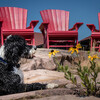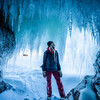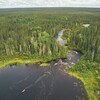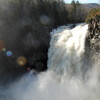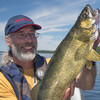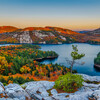
Is It Better To Kayak Or Canoe On Lake Superior?
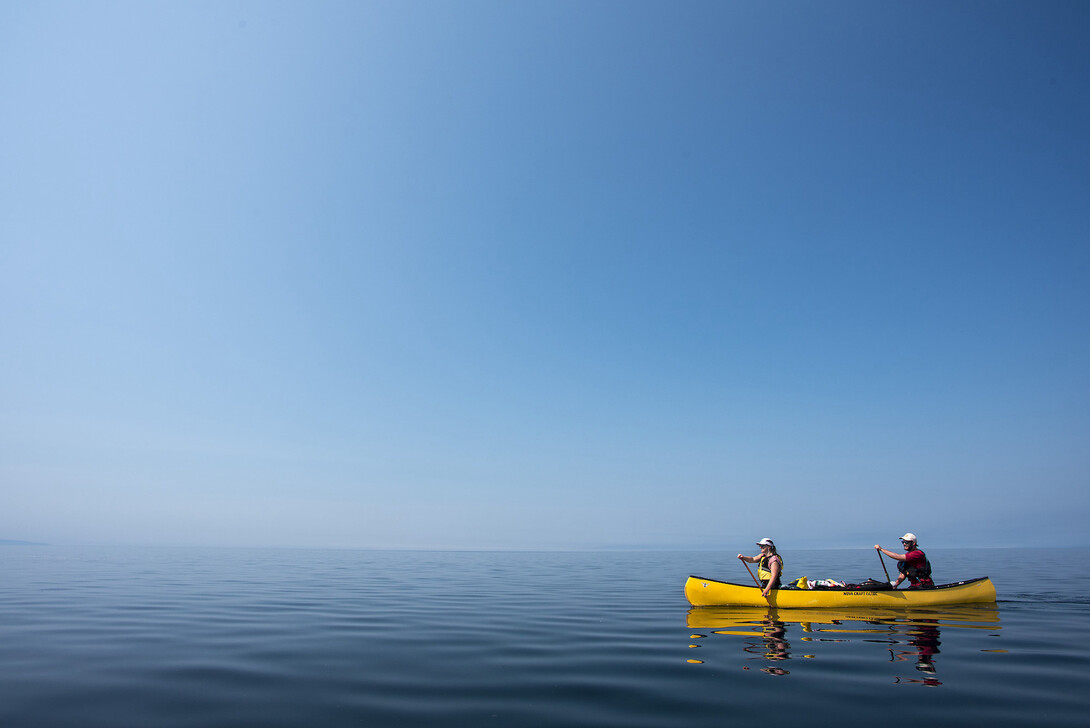
Prior to my paddling trip along the coast of Lake Superior I was asked several times why I would be travelling by canoe, the assumption being that sea kayaks are a more suitable craft for our route. Indeed, the experienced paddlers in our group have travelled to the Dog River many times, predominantly by sea kayak.
But as our group of six adults and two children shove off from the mouth of the Michipicoten River at Naturally Superior Adventures, all are genuinely excited about the prospect of travelling the northern shore of Lake Superior by canoe. Over the next five days I have plenty of time to contemplate the question of canoe versus kayak.
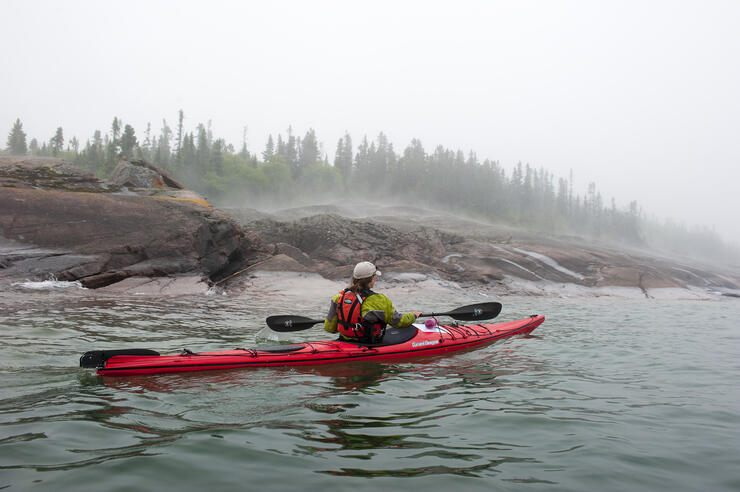
Kayaks Rule
Long before Europeans laid eyes upon the vastness of Lake Superior, Indigenous paddlers plied her waters in canoes constructed of birch bark, split spruce root and cedar. Much larger versions of the birch bark canoe were used by fur traders travelling Lake Superior from the 1600s to the mid-1800s. But modern recreational paddlers would come to favour the sea kayak for reasons that continue to hold water today.
First and foremost is speed: long and slender sea kayaks propelled by double bladed paddles will cover much greater distances per day than a typical canoe. They are also generally more seaworthy. The low centre of gravity provided by the low-slung seat of a kayak provides stability in rough weather and a sprayskirt stretched tautly around the cockpit allows waves to simply flow overtop.
They are also ingeniously designed with watertight compartments to stow all the gear we need for extended trips.
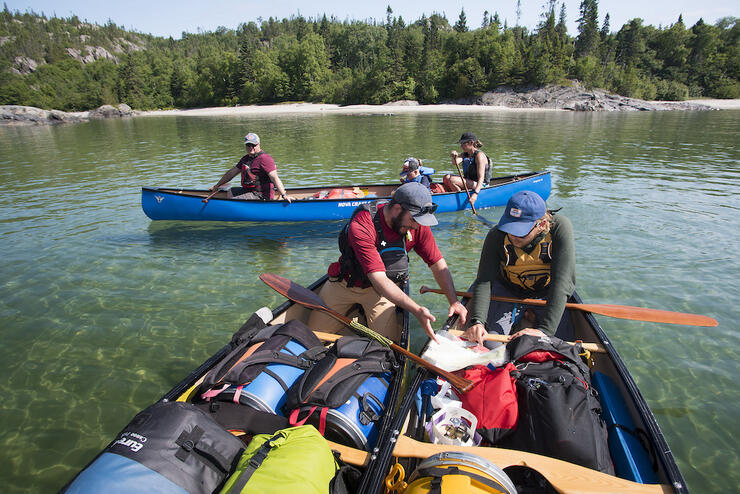
The Case for Canoes
Many of the advantages of the kayak can also be seen as liabilities. As we pack large watertight barrels and packs of all shapes and sizes into our canoes, it’s clear how much more we can bring and how much easier it is to pack than the intricate and calculated practice of fitting the required tripping gear into a sea kayak.
One of the most obvious advantages of a canoe is the accessible and usable amount of room in a large open boat. In addition to Alex and Justine in one canoe, Rupert and I are in a second, and a third canoe carries Jeff and Laura and their two children, Finn and Isla. This sort of family-friendly accommodation is simply not available in a sea kayak.
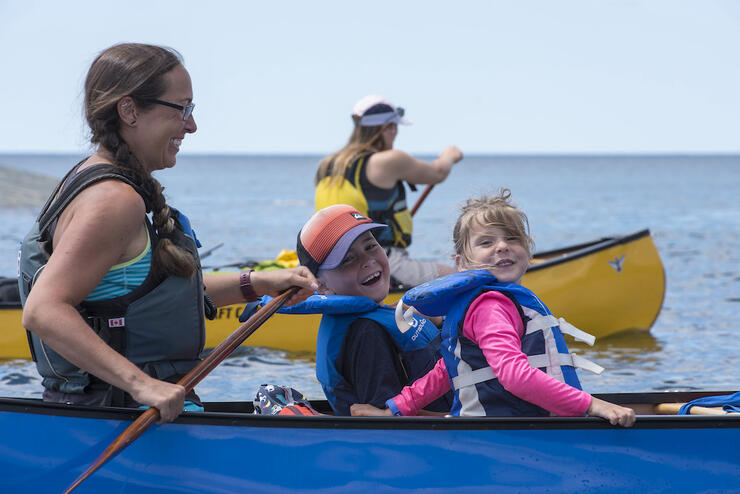
Fulfilling my role as photographer is also easier in a canoe. While Rupert provides ample horsepower from the stern, I can open my camera pack on the bottom of the canoe for access to everything I need without the danger of items rolling off into the lake. Opening a camera pack, or any pack for that matter, on the rounded deck of a kayak is a much different story.
In a canoe we have more choices of paddling position than the single seated option of a sea kayak. The default is generally sitting on the canoe seat, but we can also paddle from a kneeling position for increased stability and we can even stand if we’re careful.
As I look over at youngsters Isla and Finn, we can also lie out on top of soft backpacks or curl up and take a nap in the bottom of the canoe. Even though we’re not travelling as fast as we would by sea kayak, our return trip route only covers about 45 kilometres and, spread over five days, is quite manageable.
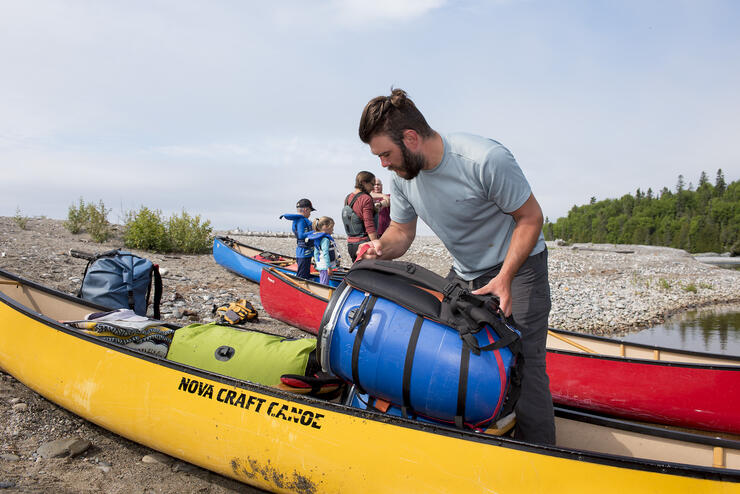
Although sea kayaks are much faster and more seaworthy, if Lake Superior decides to erupt into rough seas the only intelligent choice is to get off the lake, no matter what we are paddling. As it turns out, our paddle up the coast is accompanied by warm and sunny weather and unusually calm waters for the entire trip.
Lake Superior is an established sea kayaking destination, but she can also be incredibly kind to those who choose to enjoy the advantages of travelling by canoe.
Recommended Articles
19 Winter Activities to Add to Your Bucket List
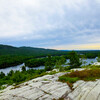
Paddle to the Trailhead
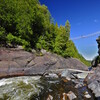
Ontario’s National Parks

Cross Country Skiing In Ontario This Winter
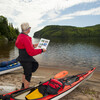
Paddling the painted landscape
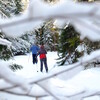
Best Weekend Escapes

Quiz: Campsites of Ontario
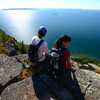
Want this view?

10 Mind-Blowing Images of Ontario
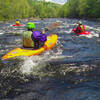
Face Your Fear

exceptional sea kayaking
Tom Thomson Self-Guided Tour
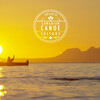
Get 2 for 1 coupon
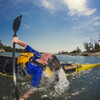
Skills Video: How to roll a sea kayak
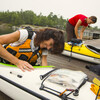
Can it all fit?

Put the WOW in your winter images
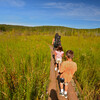
Hiking with Kids?
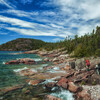
Could you do this?

Want to see the northern lights?

